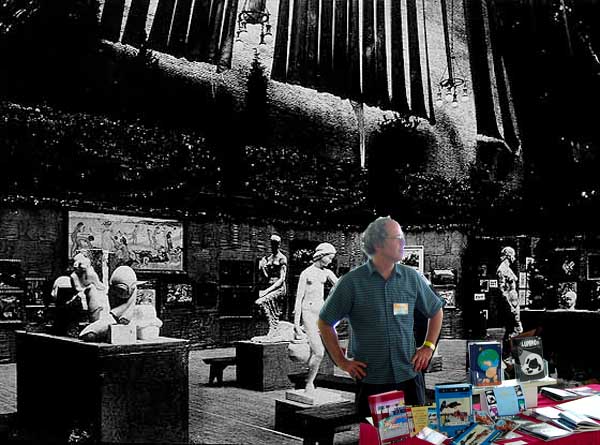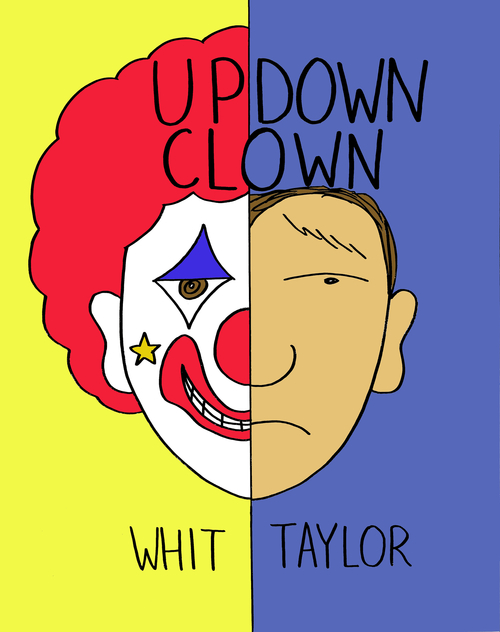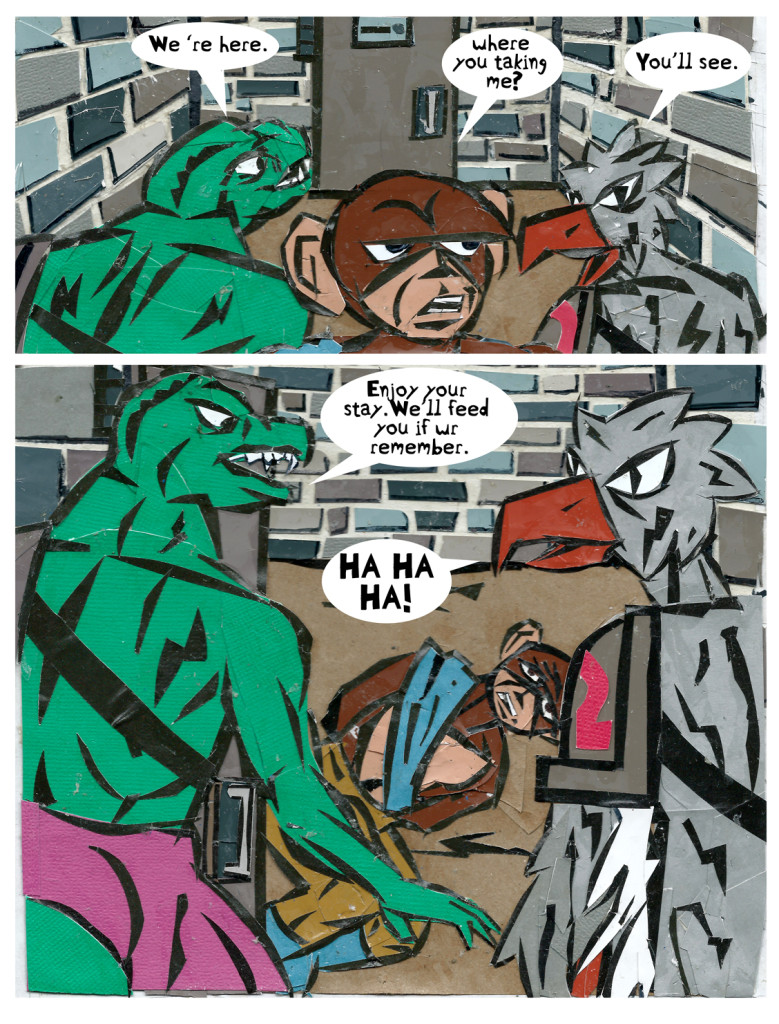Portugese comics scholar Pedro Moura did an interview with me and Alexander Danner about Comics: a Global History, for the Comics Alternative website. Â Pedro wrote a review too, for his Portugese blog (Google translate will give you a rough idea of what it says, if you ask nicely!)
Tag: Alexander Danner
April 4-5: MoCCA!
I’m going to be at the MoCCA Fest in New York, along with three of my all-time favorite collaborators: Alexander Danner, with whom I co-wrote Comics: A Global History (as well as other collaborations); and Whit Taylor, who is editing the SubCultures anthology for Ninth Art Press (which makes me the publisher), and Doug De Rocher, the cut-paper comics creator, whose work appeared in Show and Tell and The Greatest of All Time Comics Anthology. The MoCCA Fest can be found at the 69th Regiment Armory (Lexington Ave., between 25th and 26th — the very same place where the famous Armory Show of 1913 was held!)
(For bonus points: how many cartoonists can you name who really exhibited in the 1913 Armory Show? Â There were at least 6!)
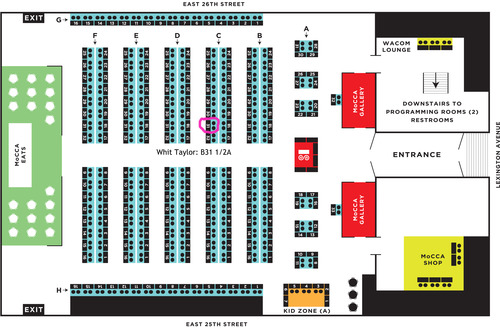
Amongst the exciting items on our tables:
Comics: a Global History, 1968-Present. Â We’ll have 2 display copies only, not for sale, but this will be the first time the book has been seen in public! Â There’ll be a postcard for the book as well!
*************************************
Up-Down Clown by Whit Taylor.  A MoCCA debut, Whit’s new graphic novel, a sweet, perceptive and moving, naturalistic fiction about a young professional clown dealing with emotional, relationship and career issues.
*************************************
The SubCultures anthology preview postcard!  The book is still a few months off, but MoCCA will witness the world premiere of this glossy, 4×6 postcard, revealing Box Brown’s delectable cover!  Yes, that makes two free postcards at the table!  Suitable for framing or for keeping in the big pile of stuff you got at MoCCA that sits in the corner until sometime next year!
*******************************
Monarch Monkey and Other Stories by Doug De Rocher: a collection of amazing cut-paper comics:
And of course you will find an assortment of Ninth Art Press excellence, including the anthologies Show and Tell, the Greatest of All Time Comics Anthology, In a Single Bound 1-3, plus Cold Wind and other one-shots. And for those who’ve been following my “Eunice Williams Story” process posts with baited breath, I’ll have the original art from the story! MoCCA is a great show, and you should not miss it!  Stop by and say hi.
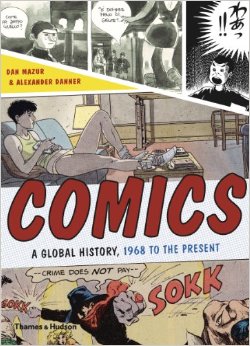 Upcoming in June from publisher Thames and Hudson, “Comics: a Global History, 1968-present,” written by Alexander Danner and me. Â I want to post some snippets from the book, including some great comics images (from foreign lands and bygone days) that we couldn’t quite fit in the book. Â
Upcoming in June from publisher Thames and Hudson, “Comics: a Global History, 1968-present,” written by Alexander Danner and me. Â I want to post some snippets from the book, including some great comics images (from foreign lands and bygone days) that we couldn’t quite fit in the book. Â
As the title suggests, the book covers the period from, roughly, 1968 until 2010. The introduction, though, provides some background on the development of comics around the world (focusing mainly on Europe, Japan and the U.S.) during the post-war era through the mid-60s.
In the Japanese section, after exploring Osamu Tezuka’s breakthrough work of the late 40s and early 50s, we move on to the 1950s gekiga movement:
By 1956 or so, a small rebellion against Tezukian hegemony was stirring in Osaka,
led by a group of young up-and-comers including Yoshihiro Tatsumi, Takao Saito¯
and Masahiko Matsumoto. Reverent admirers of Tezuka, they nonetheless felt
the need for more bite in their manga, and hence gekiga (meaning “dramatic
pictures†as opposed to manga, “playful pictureâ€) was created to, as Tatsumi
put it, provide “material for those in the transitional period between childhood
and adulthood.†* Distributed through the inexpensive rental library—or
kashihon—market, the early gekiga stories were mostly thrillers and mysteries
for adolescent male readers, with cinematic paneling and lighting effects
inspired by French and American film noir.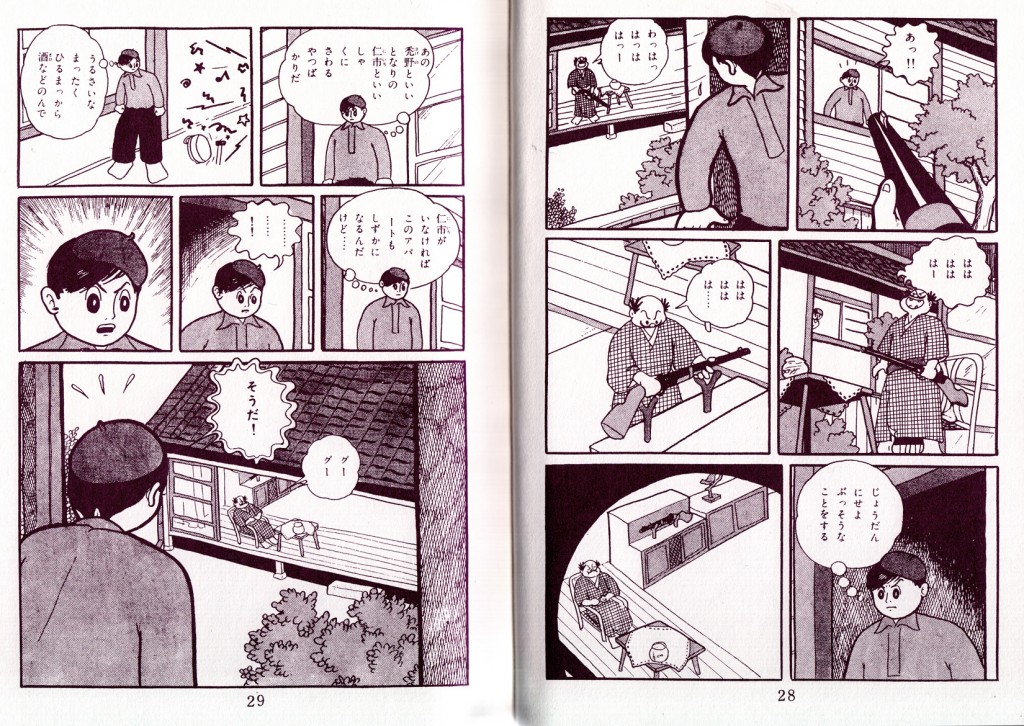
- Matsuhiko Matsumoto – Rinshitsu no otoko (The Man Next Door) – 1956 from Kage #1
The young gekiga artists of the 1950s, like Matsumoto, were great fans of Osamu Tezuka, and their cartooning style owed much to his. They pushed his “cinematicâ€Â qualities a little further, with more use of angles and of “aspect-to-aspect†paneling (images of details within a scene, employed to build atmosphere or, in the case of this page, suspense), and in general brought a darker, tougher mood to juvenile thrillers  and mysteries.
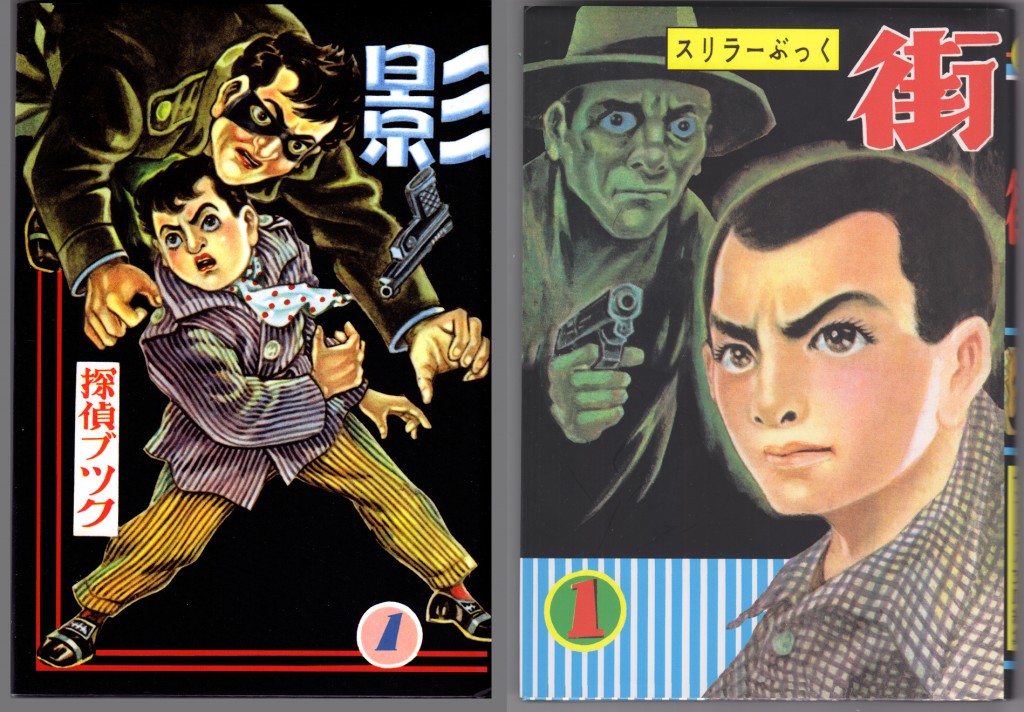
This first wave of gekiga** creators collaborated on two anthology periodicals, Kage (“Shadow”) was launched in 1956. The magazine was a success, sparking a boom in crime-themed, short story manga collections for the inexpensive kashihon market. But Kage’s small Osaka publisher, Hinomaru Bunko, was in perpetual financial straits, and when in the following year it appeared that the firm would go under, Matsumoto and Tatsumi accepted an offer from a rival to start a second, noir-ish anthology, Machi (“City”).***  Here are some images scanned from facsimile editions of the first issue of each of those titles:
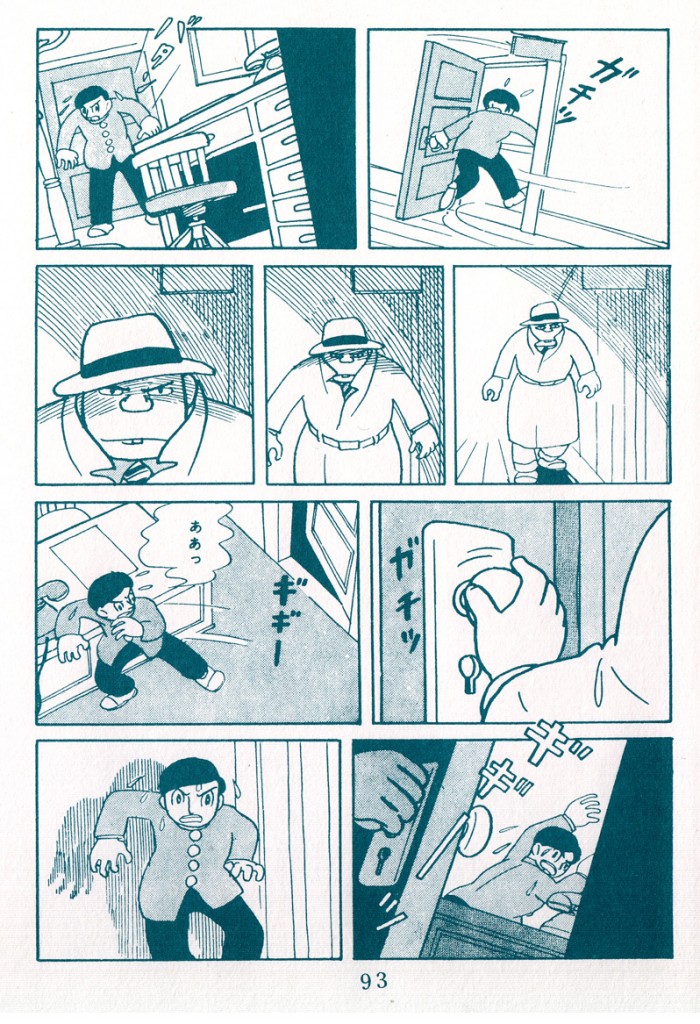
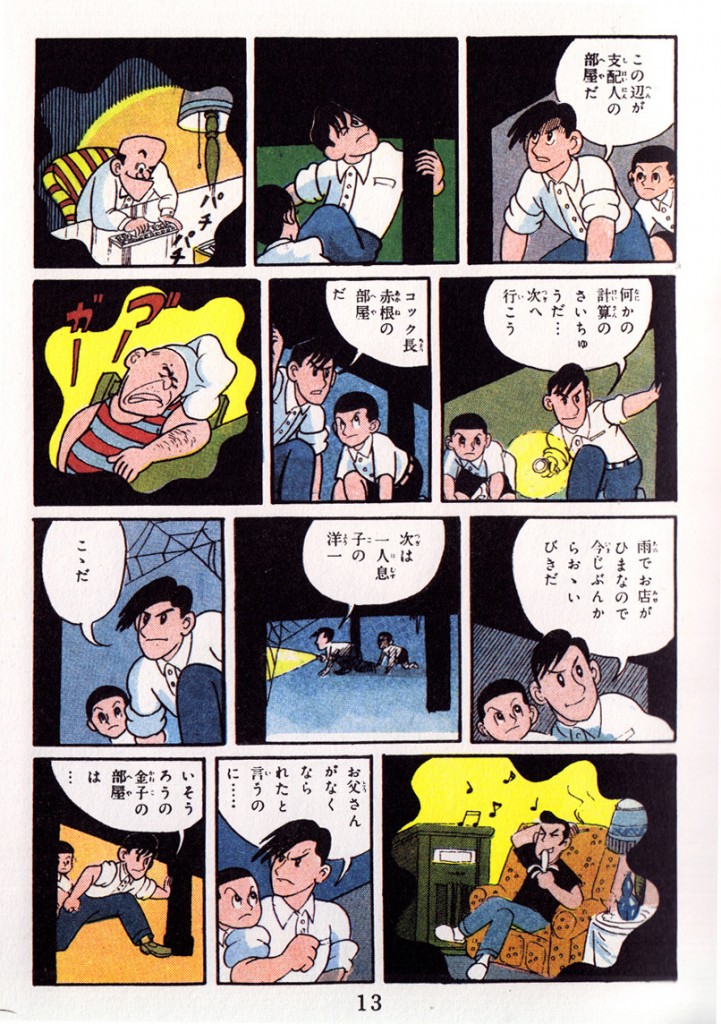
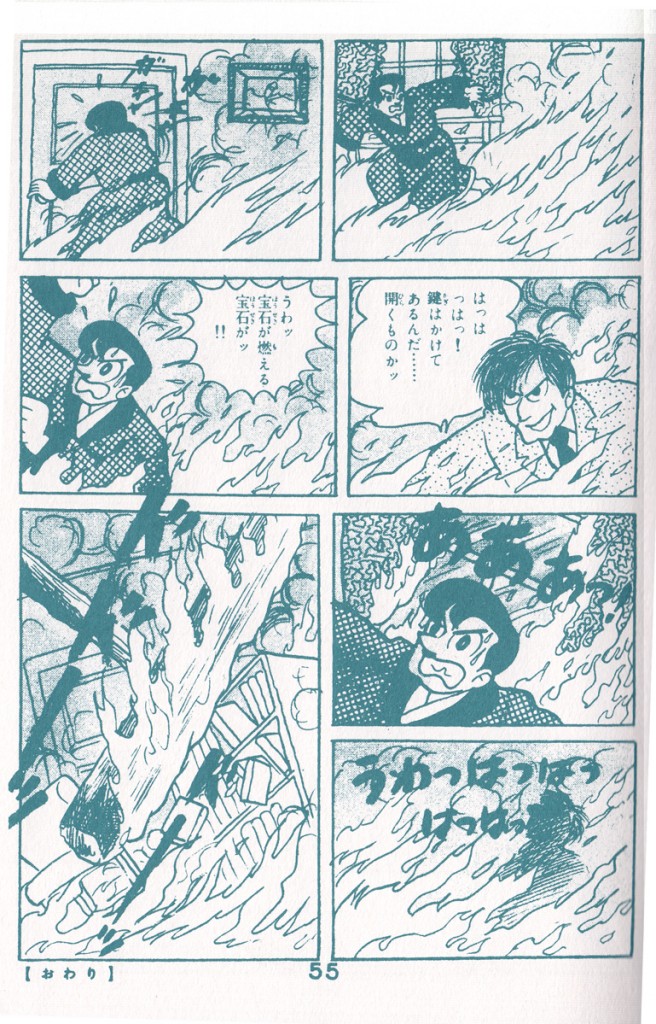
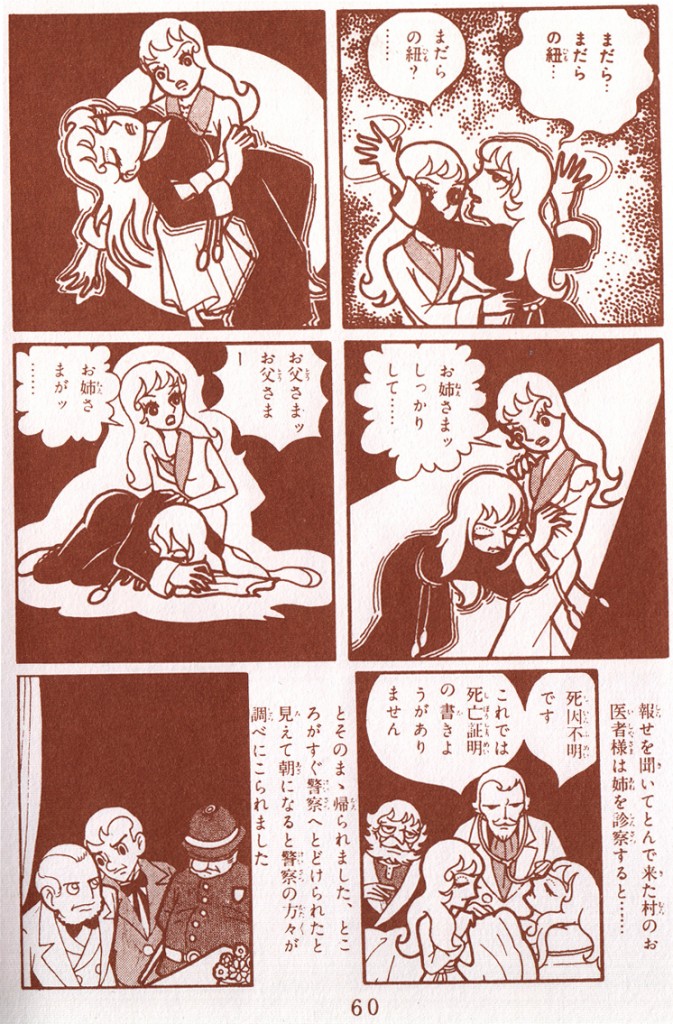
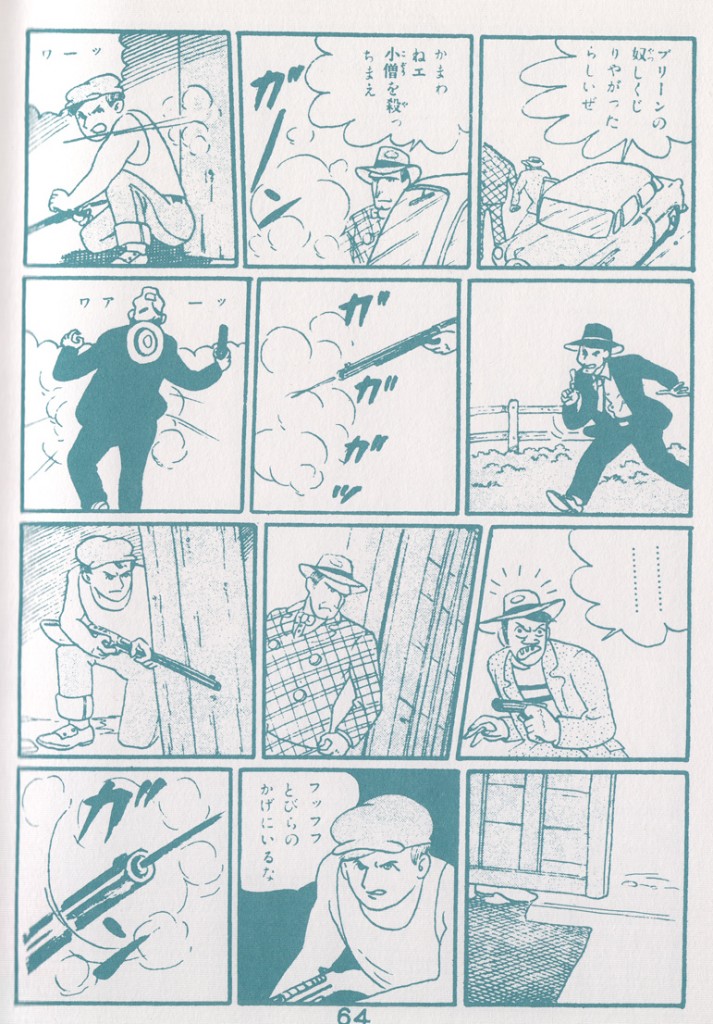
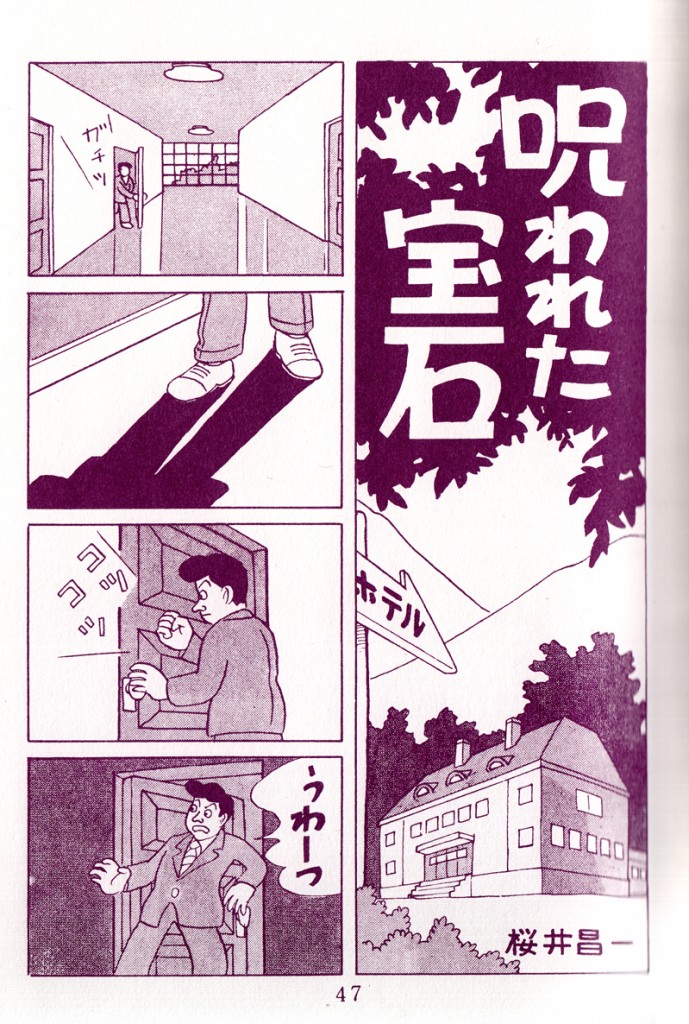
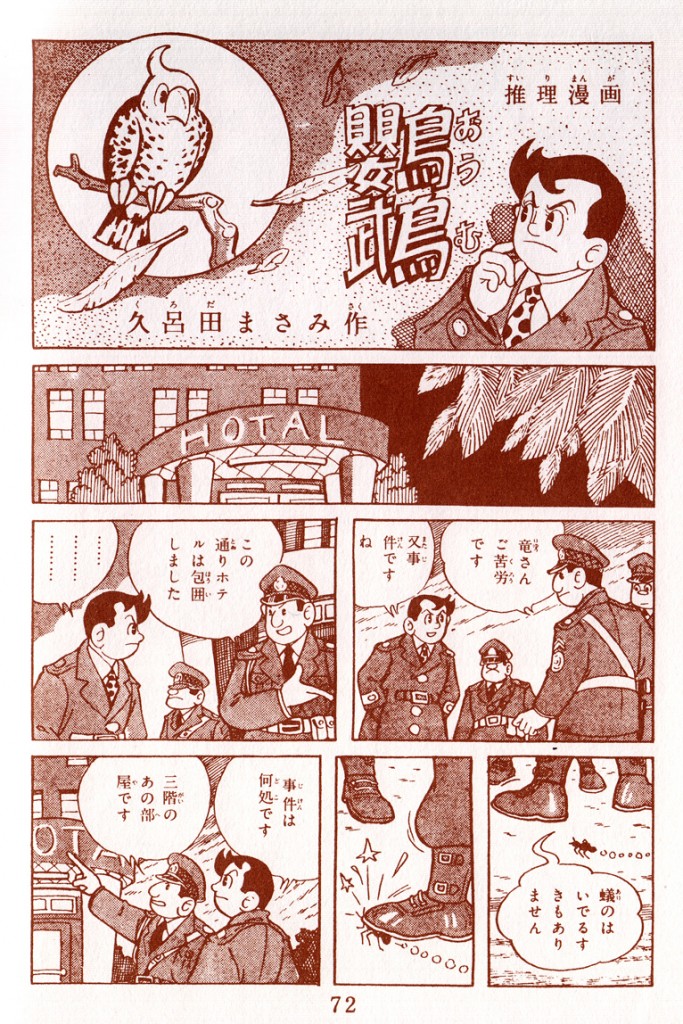
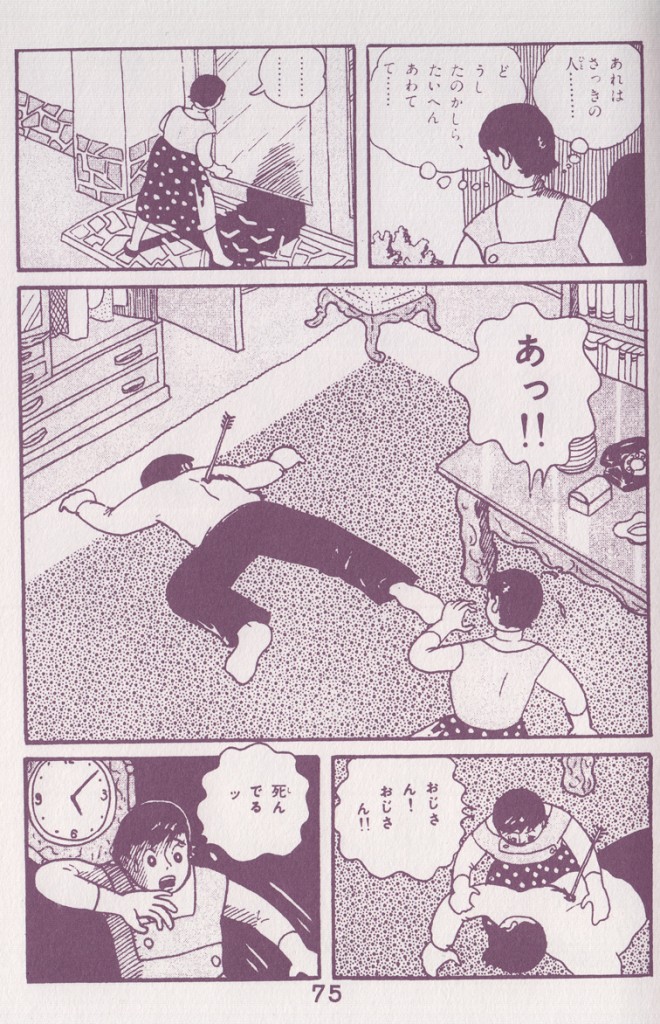
*Quoted in “God of Comics: Osamu Tezuka and the Creation of Post-World War II Manga” by Natsu Onoda Power
** The term “gekiga” wasn’t yet used during the heyday of Kage and Machi. Â Matsumoto favored the term “Komaga” to differentiate their work, geared for older readers, from manga, which was still thought of as a children’s form. Tatsumi coined the term “gekiga” a few years later.
***As recounted by Matsumoto in his autobiographical “Gekiga Fanatics”
